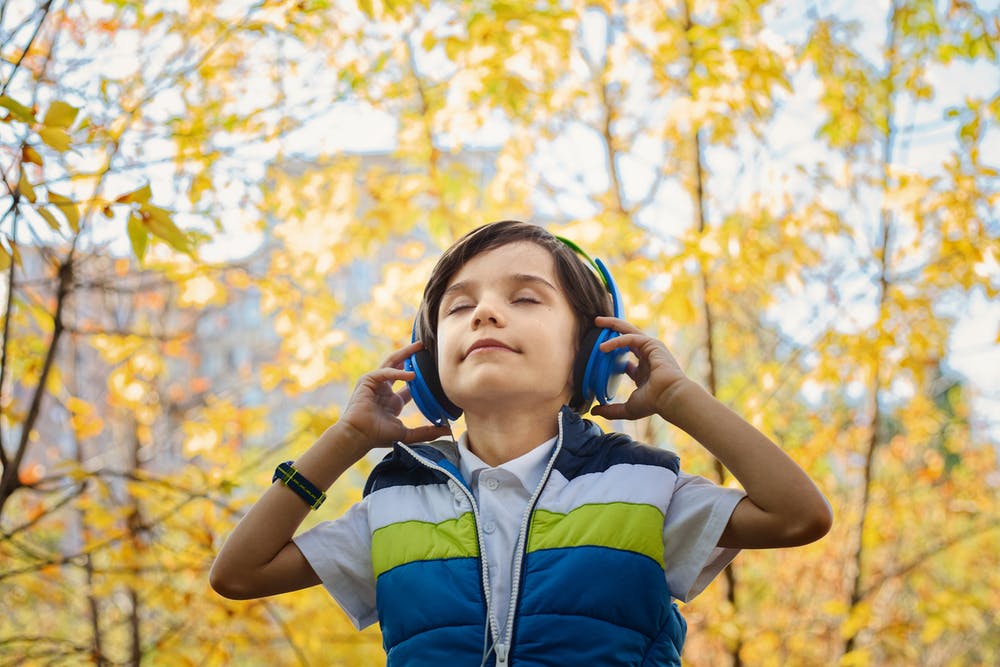In this second part of my series on SPD, I’m going to be looking at the different ways that autistic people may process sound. As previously mentioned, Sensory Processing Disorder occurs when the brain has difficulty with the information it receives via the senses.
When I discussed visual SPD in the last blogpost, I mentioned that sensory behaviours can be either “seeking” or “avoiding.” The same is true with hearing sounds and we are going to look at how this can impact on everyday life.
How May SPD Affect How Someone Processes Sound?
It is estimated that as many as 7% of children have a problem with processing sound. This can also be known as auditory hypersensitivity. Unlike deafness, the child has no problem actually hearing sounds. The problem occurs in the way that the brain processs the sounds. For example, in a typical classroom there may be a teacher talking to the class, but there is also a variety of background noise, like a ticking clock, squeaking chairs, whispering children or outside traffic. A child with SPD may struggle to filter the relevant noises from the background ones.
As a result of this, a child with auditory hypersensitivity may have trouble remembering information if it is given verbally. It may also affect their social development if their ability to interact with peers is affected. Many opportunities for socialising involve noisy venues, so this can create real problems when a child with SPD reaches the teenage years and cannot access these places without feeling uncomfortable.
Scientists at the University of California studied the brains of autistic children exposed to traffic sounds and scratchy noises. They found that the amygdala (part of the brain associated with social and emotional behaviour) was more active in autistic children than neurotypical children when hearing these sounds.

Sensory Seeking Behaviours
A child with SPD may seek out loud noises or crave them. They might enjoy listening to loud music on their headphones. They may like visiting noisy, crowded places or self-stimulate by banging objects loudly.
Some autistic people are sensitive to pitch and a group of British researchers studying autistic children found that 20% had “perfect pitch,” meaning that they have an exceptional ability to distinguish between musical notes. However, other children in the same study had problems distinguishing the loudness of a tone. These children were the ones least likely to cope with everyday noises.
Sensory Avoiding Behaviours
Some children with autism can actually feel physical pain when exposed to certain sounds, especially very loud and unexpected sounds like a fire engine or someone shouting in the street. This can lead to public meltdowns, which can be very distressing for both parent and child.
If asked to picture an autistic child, we may conjure an image of someone covering their ears, trying to blot out the noise. This is because auditory sensitivity is so common in autistic children. From a practical point of view, concentrating in class at school may be hard as competing sounds merge together as one. A child may even be able to hear people having a conversation in the distance. Sounds that we may view as “normal” may be unbearable to an autistic person.
Helping A Child With Auditory Processing Issues
There are many practical ways that parents and friends can help a child with SPD. For example, ear defenders, the type used by industrial workers, can be a great help, as they muffle out the noise and make it more bearable. This can be a useful strategy if you are visiting a crowded or noisy place; for example, a fireworks show.
Sensory seekers may benefit by having their needs met, for at least some part of the day, in a home or school setting. This could include having access to musical instruments or being able to listen to music on headphones.
It can be a good idea to prepare a child before going somewhere that may potentially cause issues. Think about the place that you are visiting and any problems that you could foresee occurring. The child may be best positioned away from loud sources of noise (unless they are a sensory seeker!) or away from windows and sources of conflicting sounds.
Children with SPD may enjoy listening to recordings of white noise as a way to relax. Earbuds or noise-cancelling headphones could also be useful devices that may help a child.
In my next blogpost, I will be looking at how the sense of taste is affected by SPD, and some of the implications associated with taste hypersensitivity.
One thought on “Sensory Processing Disorder: Hearing”